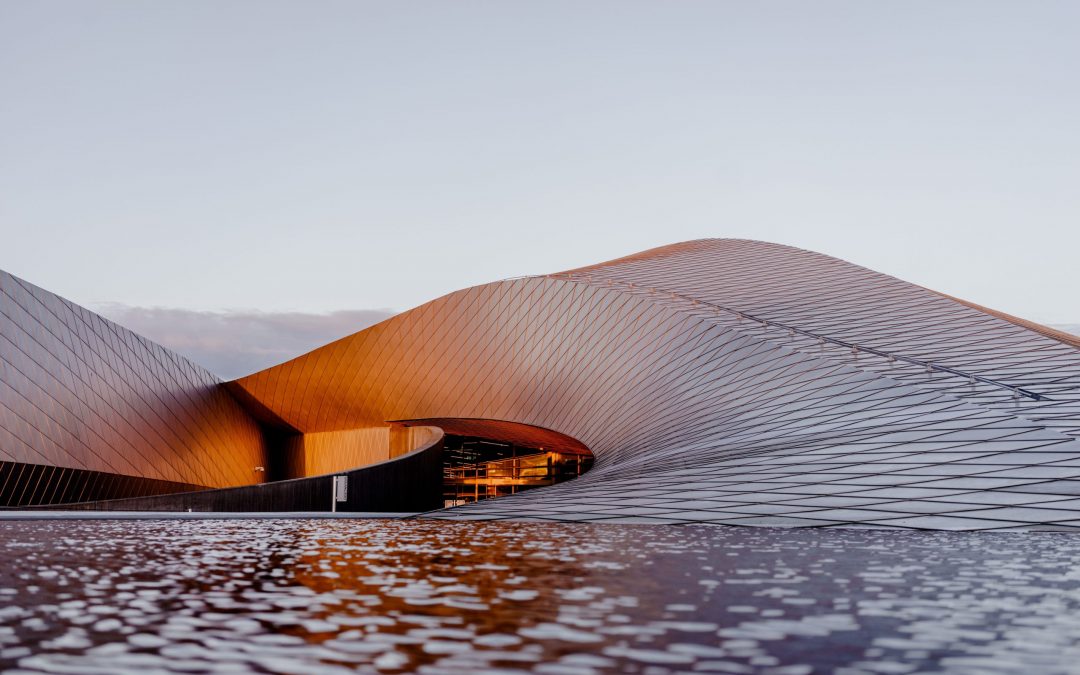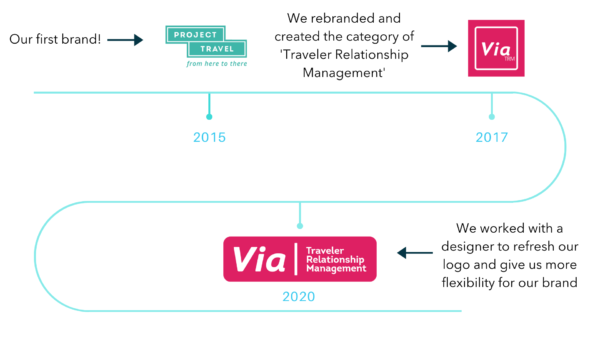#EveryTraveler
We’re believers in the power of a clear, relatable brand at Via TRM. Our company is on a mission to engage every student in global opportunities, and we know that technology alone will not help us achieve this mission. The ideas and people who build and use the technology are just as important as the product itself – and that’s what brand is, a sum of all parts.
Leading up to a new product launch in October 2020, however, we faced a challenge with our current brand. Our company name, Via TRM, had always done triple-time and been our brand, the name of our study abroad software, and description of a new category we created in “Traveler Relationship Management.”
We needed to name our new product and distinguish our company from our core study abroad product.
It was time for us to look at our Brand Architecture.
Brand Architecture is a system that organizes brands, products and services to help an audience access and relate to a brand. A successful Brand Architecture enables consumers to form opinions and preferences for an entire family of brands by interacting with or learning about only one brand in that family. Source.
Brand Architecture can bring value to an organization, particularly in a time of ambiguity, in a number of ways:
- Bring clarity and renewed focus to the work and mission
- Help organize both internal and external resources
- Reduce marketing efforts and streamline team efforts
- Clarify messaging
- Enhance customer awareness
- Build resilience and strategic allegiances
Step 1: Research
To begin our research process, we took a journey down memory lane and chronicled the history of Via TRM and the evolution of the brand:
And we sketched out our current brand architecture.
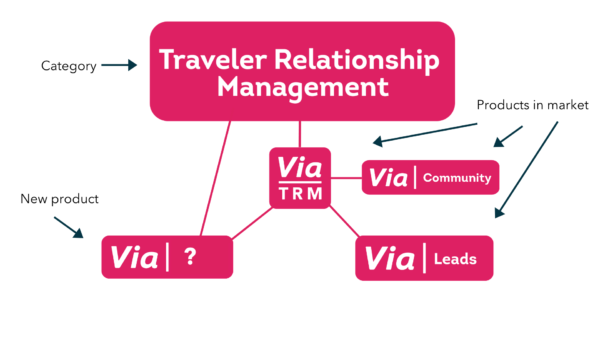
And, perhaps most importantly, we identified some of the questions we needed to address:
- Identity/Name:
- Should we name our study abroad product?
- What would we name the new product?
- Website:
- How has the website performed historically?
- What do we need from the website to grow our business?
- Colors:
- How would our signature pink color be understood by a new audience?
- Should we incorporate more colors to create distinction between our products?
Our executive team discussed what it would look like to build our brand architecture so that we were ready to scale.
Step 2: Setting Goals
After we had an idea of the why, we needed to identify our goals for reconsidering the Brand Architecture.
We knew that we wanted to continue to own the category that we had created of “Traveler Relationship Management” (TRM).
We identified that we needed our Brand Architecture to accomplish two things:
- Strategically position us to continue to own the category of TRM
- Help us reach new audiences with our new product offering, while still remaining relevant to our current audience
One clear opportunity for improvement, and the anchor to enacting this new Brand Architecture, was our website.
Our previous website functioned and it accomplished a few key things:
- It told our story
- It gave our Clients and perspective customers an easy way to get in touch with us
- It housed our blog where we’d talk about the latest news
As we considered the modern journey of customers, especially in 2020, we knew that there were key things that the old website wasn’t accomplishing:
- Housing videos for more in depth overviews of the product
- Sharing the key differentiators for our key products
- Giving people the ability self-guide themselves through the product
Step 3: House of Brands vs. Branded House
A key question to ask when considering Brand Architecture is if the company should be a house of brands, or a branded house.
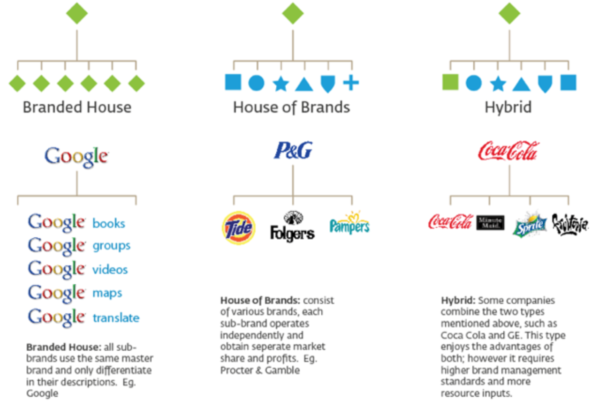
The Branded House strategy has one main identity that unifies all products, like Google in the example above.
A House of Brands, on the other hand, has an almost invisible master brand, and each product has its own identity and marketing.
The Hybrid strategy is a combination of both strategies and allows for master brand visibility in addition to product-specific marketing and identity.
As we explored these options, we knew that Via TRM should be a house of brands. We created and own the TRM category, and all of our products are ultimately about making travel and travel management more simple.
Step 4: Building
Once we identified our structure, we got to work and laid out our new brand architecture. For us, this process included naming both our study abroad software and the new solo & group travel software products in addition to rebuilding our website.
For the naming process, we hosted an all-team brainstorming session using Google’s Jamboard to visual represent the conversation and Asana to track our ideas.
And this is where we landed…
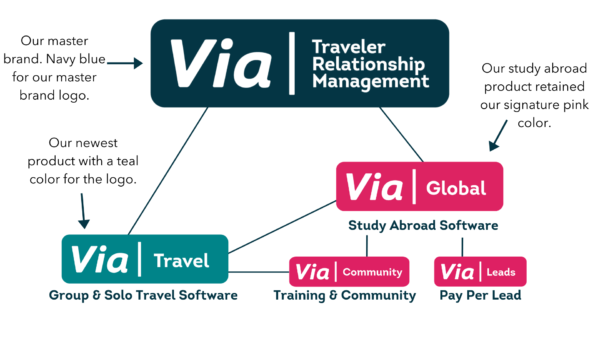
We decided that Via TRM would be elevated to stand as our master brand and we introduced:
We brought our new Brand Architecture home by building a new website which communicates the value of each of our products, while also communicating the value of Traveler Relationship Management across industries.
And of course, shoutouts 
Like most strategic undertakings, revising our Brand Architecture was supported by a number of people. Special thanks to:
- Our Early Adopter Club of Clients here at Via TRM: This key group is always willing to give us valuable and honest feedback.
- Dan Lehman – QRS: Who refreshed and updated our logo design and set us up well to be able to brand a new product

